Weipeng Lu
TOV: The Original Vision Model for Optical Remote Sensing Image Understanding via Self-supervised Learning
Apr 10, 2022
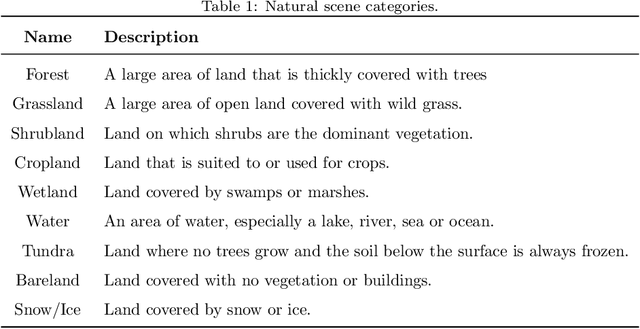
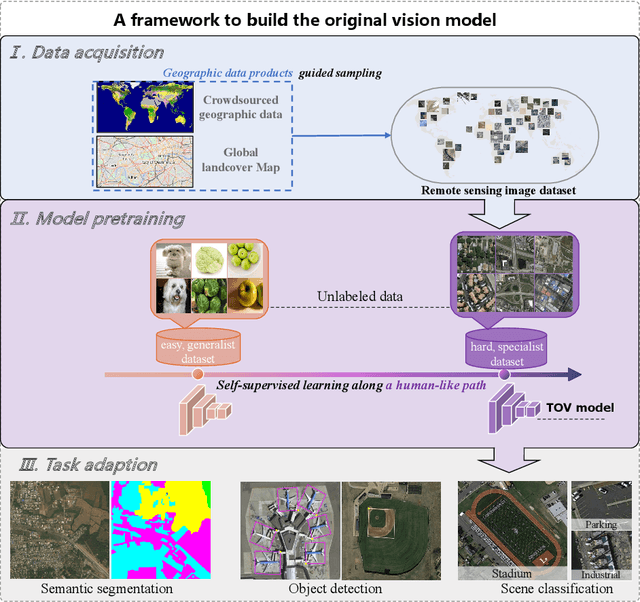
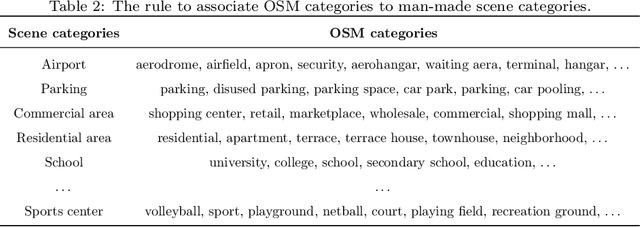
Abstract:Do we on the right way for remote sensing image understanding (RSIU) by training models via supervised data-dependent and task-dependent way, instead of human vision in a label-free and task-independent way? We argue that a more desirable RSIU model should be trained with intrinsic structure from data rather that extrinsic human labels to realize generalizability across a wide range of RSIU tasks. According to this hypothesis, we proposed \textbf{T}he \textbf{O}riginal \textbf{V}ision model (TOV) in remote sensing filed. Trained by massive unlabeled optical data along a human-like self-supervised learning (SSL) path that is from general knowledge to specialized knowledge, TOV model can be easily adapted to various RSIU tasks, including scene classification, object detection, and semantic segmentation, and outperforms dominant ImageNet supervised pretrained method as well as two recently proposed SSL pretrained methods on majority of 12 publicly available benchmarks. Moreover, we analyze the influences of two key factors on the performance of building TOV model for RSIU, including the influence of using different data sampling methods and the selection of learning paths during self-supervised optimization. We believe that a general model which is trained by a label-free and task-independent way may be the next paradigm for RSIU and hope the insights distilled from this study can help to foster the development of an original vision model for RSIU.
Remote Sensing Image Scene Classification with Self-Supervised Paradigm under Limited Labeled Samples
Oct 02, 2020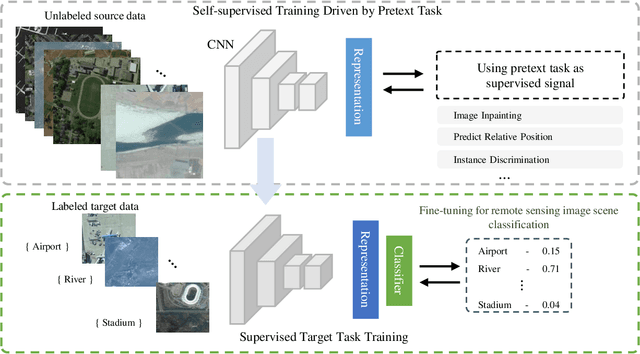
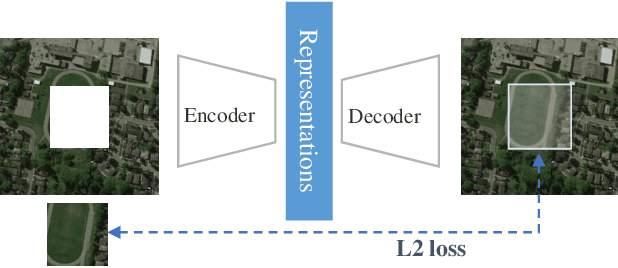

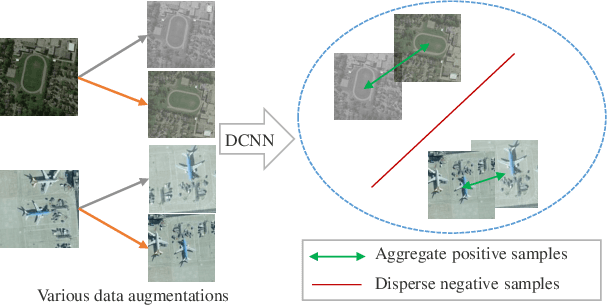
Abstract:With the development of deep learning, supervised learning methods perform well in remote sensing images (RSIs) scene classification. However, supervised learning requires a huge number of annotated data for training. When labeled samples are not sufficient, the most common solution is to fine-tune the pre-training models using a large natural image dataset (e.g. ImageNet). However, this learning paradigm is not a panacea, especially when the target remote sensing images (e.g. multispectral and hyperspectral data) have different imaging mechanisms from RGB natural images. To solve this problem, we introduce new self-supervised learning (SSL) mechanism to obtain the high-performance pre-training model for RSIs scene classification from large unlabeled data. Experiments on three commonly used RSIs scene classification datasets demonstrated that this new learning paradigm outperforms the traditional dominant ImageNet pre-trained model. Moreover, we analyze the impacts of several factors in SSL on RSIs scene classification tasks, including the choice of self-supervised signals, the domain difference between the source and target dataset, and the amount of pre-training data. The insights distilled from our studies can help to foster the development of SSL in the remote sensing community. Since SSL could learn from unlabeled massive RSIs which are extremely easy to obtain, it will be a potentially promising way to alleviate dependence on labeled samples and thus efficiently solve many problems, such as global mapping.
 Add to Chrome
Add to Chrome Add to Firefox
Add to Firefox Add to Edge
Add to Edge